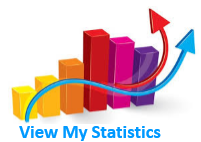Do dividends still matter? The role of investment opportunities on the ability of dividends to predict future earnings
DOI:
https://doi.org/10.18196/jai.v24i2.17016Keywords:
Dividend, Dividend signaling, Investment opportunities, Future earningsAbstract
Research aims: This study investigates the role of firm characteristics explained by the investment opportunity (IO) on the ability of dividends to predict future earnings.
Design/Methodology/Approach: This study performed an empirical study on firms listed in the consumer goods sub-sector on the Indonesian Stock Exchange, divided into companies with strong and weak IO categories to clearly see the role of IO by comparing the variable dividend coefficients of the two sample categories. Through purposive sampling, the researcher determined the research sample, totaling 42 firm samples for the weak IO category and 48 firm samples for the strong IO category. Then, the multiple regression analysis utilizing IBM SPSS Statistic Version 23 was employed to analyze the relationship between variables.
Research findings: Surprisingly, companies with weak IO showed a more remarkable ability to predict future earnings than companies with strong IO because the dividend coefficient of companies with weak IO was higher than that of strong IO, denoting that the number could explain the strength of ability.
Theoretical contribution/Originality: The result provides alternative explanations to the previous inconsistent results from the dividend's ability to predict future earnings. The result also supports the argument that the companies with weak IO may use dividends to convey information signals and compensate the investor for unsatisfied performance, which is called counter-signal when strong IO refrain from doing so and rely on additional information.
Practitioner/Policy implication: Investors should notice companies' characteristics, such as investment opportunities, while considering dividends as a signal for future performance to make an investment decision.
Research limitation/Implication: The research did not fully capture all companies in Indonesian Stock Exchange, but specifically for the companies’ sub-sector that aggressively paid the dividend. Thus, future research is hoped to provide empirical studies for other sector companies listed on Indonesia Stock Exchange to enrich alternative explanations.
References
Aghamolla, C., Corona, C., & Zheng, R. (2021). No reliance on guidance: counter-signaling in management forecasts. The RAND Journal of Economics, 52(1), 207–245. https://doi.org/10.1111/1756-2171.12367
Allen, F., & Michaely, R. (2003). Payout policy. Handbook of the Economics of Finance, 1, 337–429. https://doi.org/10.1016/S1574-0102(03)01011-2
Anggara, I. W. G. W. P. (2020). Pengaruh kebijakan dividen terhadap laba di masa depan. E-Jurnal Akuntansi, 30(9), 2428. https://doi.org/10.24843/eja.2020.v30.i09.p20
Bhattacharya, S. (1979). Imperfect policy, in the hand " fallacy " the bird. The Bell Journal of Economics, 10(1), 259–270. https://doi.org/10.2307/3003330
Christanti, N., & Mahastanti, L. A. (2011). Faktor-faktor yang dipertimbangkan investor dalam melakukan investasi. Jurnal Manajemen Teori Dan Terapan, 4(3), 37–51. https://doi.org/10.20473/jmtt.v4i3.2424
DeAngelo, H., & DeAngelo, L. (2006). The irrelevance of the MM dividend irrelevance theorem. Journal of Financial Economics, 79(2), 293–315. https://doi.org/10.1016/j.jfineco.2005.03.003
Erickson, T., & Whited, T. M. (2011). Treating measurement error in Tobin’s q. Review of Financial Studies, 25(4), 1286–1329. https://doi.org/10.1093/rfs/hhr120
Farre-Mensa, J., Michaely, R., & Schmalz, M. (2014). Payout policy. Annual Review of Financial Economics, 6, 75–134. https://doi.org/10.1146/annurev-financial-110613-034259
Feltovich, N., Harbaugh, R., & To, T. (2002). Too Cool for School? Signalling and Countersignalling. The RAND Journal of Economics, 33(4), 630-649. https://doi.org/10.2307/3087478
Grullon, G., Michaely, R., Benartzi, S., & Thaler, R. H. (2005). Dividend changes do not signal changes in future profitability. Journal of Business, 78(5), 1659–1682. https://doi.org/10.1086/431438
Gultom, R. J. (2018). Hubungan perubahan dividen dengan perubahan laba perusahaan terdaftar di bei. Studi Akuntansi Dan Keuangan, 1(1), 72-93. https://doi.org/10.21632/saki.1.1.72-93
Ham, C. G., Kaplan, Z. R., & Leary, M. T. (2020). Do dividends convey information about future earnings? Journal of Financial Economics, 136(2), 547–570. https://doi.org/10.1016/j.jfineco.2019.10.006
John, K., & Williams, J. (1985). Dividends, dilution, and taxes: a signalling equilibrium. The Journal of Finance, 40(4), 1053–1070. https://doi.org/10.1111/j.1540-6261.1985.tb02363.x
Kaplan, Z., & Pérez-Cavazos, G. (2022). Investment as the opportunity cost of dividend signaling. The Accounting Review, 97(3), 279–308. https://doi.org/10.2308/tar-2019-0313
Lidwina, A. (2021, April 12). Mayoritas orang indonesia berinvestasi saham untuk jangka panjang. Katadata.co.id. https://databoks.katadata.co.id/datapublish/2021/04/12/mayoritas-orang-indonesia-berinvestasi-saham-untuk-jangka-panjang
Melani, A. (2021, April 11). Trivia saham: yield dividen jadi pertimbangan investasi di pasar modal, apa itu ?. Liputan6. https://www.liputan6.com/saham/read/4529305/trivia-saham-yield-dividen-jadi-pertimbangan-investasi-di-pasar-modal-apa-itu
Miller, M. H., & Modigliani, F. (1961). Dividend policy, growth, and the valuation of shares. The Journal of Business, 34(4), 411–433. https://doi.org/10.1086/294442
Mooi, E., & Sarstedt, M. (2019). A concise guide to market research: the process, data, and methods using ibm spss statistic. In the process, data, and methods using ibm spss statistics. Springer. https://doi.org/10.1007/978-3-642-12541-6
Nuriksani, P., & Sari, V. P. (2022). Pengaruh pembayaran dividen terhadap kinerja keuangan perusahaan pada perusahaan manufaktur di BEI. Jurnal Ekonomi, 27(1), 94–108. https://doi.org/10.24912/je.v27i1.860
Olavia, L. (2022, July 11). Masih didominasi milenial dan gen z, jumlah investor saham tembus 4 juta di semester i. Investror.id. https://investor.id/market-and-corporate/299355/masih-didominasi-milenial-dan-gen-z-jumlah-investor-saham-tembus-4-juta-di-semester-i
Prasetyanta, A. (2014). Pengaruh perubahan dividen terhadap profitabilitas masa yang akan datang (future profitability). Jurnal Ekonomi Dan Bisnis, 17(2), 129-148. https://doi.org/10.24914/jeb.v17i2.278
PT Kustodian Sentral Efek Indonesia. (2021). Statistik pasar modal indonesia februari 2021. Kustodian Sentral Efek Indonesia, 1–6. https://www.ksei.co.id/files/Statistik_Publik_Januari_2021.pdf
Putra, W. M. (2008). Pengukuran permanent earnings pada hubungan dengan kebijakan dividend perusahaan: review penelitian. Jurnal Akuntansi Dan Investasi, 9(2), 189–196. https://journal.umy.ac.id/index.php/ai/article/view/1107/1185
Rahmawati, W. T. (2021, May 28). Surya Toto tetap membagikan dividen dengan yield 2,38% meski rugi, ini jadwalnya. Kontan.co.id. https://investasi.kontan.co.id/news/surya-toto-tetap-membagikan-dividen-dengan-yield-238-meski-rugi-ini-jadwalnya
Riyani, Y., & Andriana, S. (2019). Pengaruh Pengumuman Kebijakan Dividen terhadap Volatilitas Harga Saham. Jurnal Riset Terapan Akuntansi, 3(1), 59–67. https://doi.org/10.5281/zenodo.3837944
Rock, K., & Miller, M. H. (1985). Dividend policy under asymmetric information. The Journal of Finance, 40(4), 1031–1051. https://doi.org/10.1111/j.1540-6261.1985.tb02362.x
Said, A. A. (2021). Meski untung segunung, faktanya google, facebook dan amazon tidak pernah membagikan dividen. Liputan6. https://www.liputan6.com/bisnis/read/4539134/meski-untung-segunung-faktanya-google-facebook-dan-amazon-tidak-pernah-bagikan-dividen
Spence, M. (1973). Job market signalling. The Quarterly Journal of Economics, 87(3), 355–374. https://doi.org/10.1055/s-2004-820924
Sumani, S., Sandroto, C. W., & Mula, I. (2017). Perilaku investor di pasar modal indonesia. EKUITAS (Jurnal Ekonomi Dan Keuangan), 17(2), 211. https://doi.org/10.24034/j25485024.y2013.v17.i2.2250
Tobin, J. (1969). A equilibrium approach to monetary theory. Journal of Money, Credit and Banking, 1(1), 15–29. https://doi.org/10.2307/1991374
Ulfah, F. U. (2020, April 23). Meski rugi, indika (INDY) tetap bagikan dividen tunai US$ 30juta. Bisnis.com. https://market.bisnis.com/read/20200423/192/1231511/meski-rugi-indika-indy-tetap-bagikan-dividen-tunaius30juta
Wareza, M. (2019, May 22). Rugi Rp 6,2 T, perusahaan sandi tetap bagi dividen Rp 298 M. CNBC Indonesia. https://www.cnbcindonesia.com/market/20190522130943-17-74283/rugi-rp-62-t-perusahaan-sandi-tetap-bagi-dividen-rp-298-m
Widsatrya, I. W. K., & Subroto, B. (2014). Pengaruh perubahan pengumuman dividen terhadap harga saham. Jurnal Ilmiah Mahasiswa FEB Universitas Brawijaya, 3(2), 1–23. https://jimfeb.ub.ac.id/index.php/jimfeb/article/view/2299
Wijayanti, R. I. (2022, May 7). Ini alasan suatu emiten tidak membagikan dividen, setuju atau tidak ?. IDXChannel.com. https://www.idxchannel.com/market-news/ini-alasan-suatu-emiten-tidak-membagikan-dividen-setuju-atau-tidak/2
Downloads
Published
How to Cite
Issue
Section
License
License
 Journal of Accounting and Investment is licensed under Creative Commons Attribution Attribution-NonCommercial-NoDerivatives 4.0 International License.
Journal of Accounting and Investment is licensed under Creative Commons Attribution Attribution-NonCommercial-NoDerivatives 4.0 International License.




